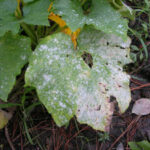From tea roses to hybrids to knockouts to garden roses, there are more types of roses than you can count and they are all susceptible to a number of diseases. While some are simply cosmetic and irritating, some diseases can have dire consequences for your rose bush. IN some cases there is no treatment.
Fungal Diseases
Roses are susceptible to several fungal diseases including black spot, rust, blight, brown canker and powdery mildew. A proactive spraying regimen can prevent most of these diseases. Once they have infected the rose bush, continue using the fungicide fungicide at 7 to 10 day intervals to cure these diseases. You may need to step up the applications to twice a week when weather is rainy or when the rose bush is exhibiting vigorous growth.
Viral Diseases
One of the most dangerous diseases for rose bushes, rose rosette disease is fatal. This virus can display a range of symptoms from one variety of rose bushes to another. Some of the symptoms to watch for are unusually small, discolored leaves, flowers that are misshapen and numerous thorns that give an almost hairy appearance to stems. All that can be done is to remove the rose bush and destroy its remains. Do not add it to your compost pile.
Bacterial Diseases
Roses can suffer from a bacterial disease called crown gall. The bacteria enter through the roots or root-level injuries to the bsh. They cause tumor-like growths on the stems of the bush. There is no actual treatment for crown gall except in mild cases to excise the growth with sanitized pruning shears. It is a good idea to destroy any trimmings. IF the disease is advanced, the bush needs to be destroyed. To prevent further spread, the soil from around the site should be removed and disposed of also.
Prevention
Using good maintenance practices should prevent most disease outbreaks There are some things you can do to help. Most fungal diseases thrive in spring-like weather when conditions are damp and warm. Using a fungicide as soon as green growth begins to appear and maintaining its use throughout the growing season is effective.
Aphids contribute to the development of powdery mildew and eriophyid mites p[lay a significant role in the spread of rose rosette disease. Using an insecticide and miticide can lower the chances of these diseases proliferating.
Most fungal diseases are prolific when conditions are warm and moist. Spring is when these conditions exist most often. The spores from fungi can overwinter in plant debris such as fallen leaves and plant cuttings.
Perform annual pruning to provide rose bushes with good air flow. Watering in the mornings when needed helps give foliage a chance to dry before the heat of the day escalates the growth of water-born fungus.
Remove plant debris such as clippings, dead flowers and fallen leaves as these can foster a place for disease and insects to overwinter.
Sources: University of Minnesota: Rose Diseases
North Dakota State University: Roses



